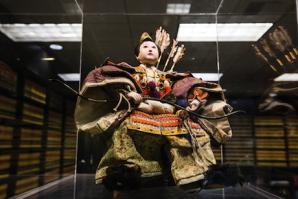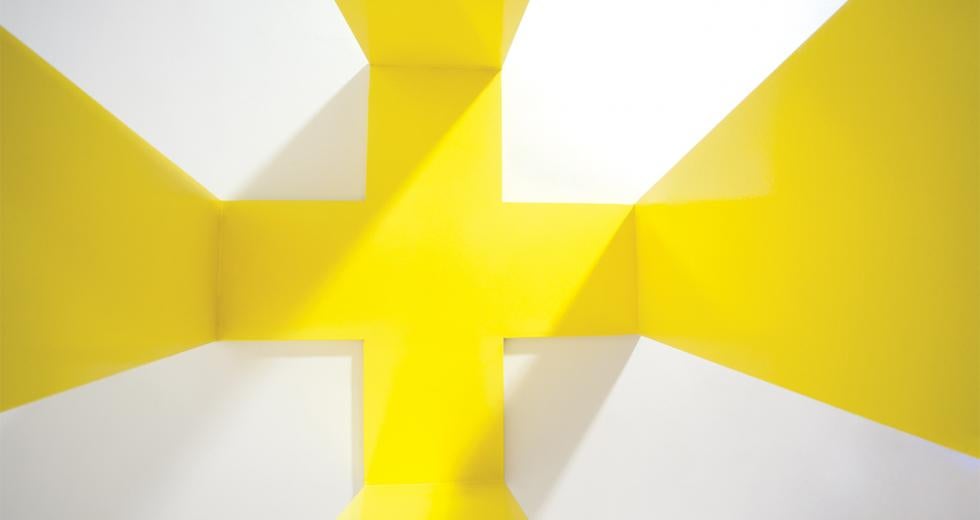The arts may be underfunded in the Capital Region, but creativity abounds. Among Sacramento’s prime talents, a number of product designers stand out for their vision, craft and ingenuity. From furniture to paper goods, these craftsmen (and women) channel their passion to elevate local aesthetic and offer clients goods that can change a mood and last a lifetime. Enhancing homes and lifestyles both near and far, here are some of our region’s premiere product designers …
“We put other people’s visions on paper.”
Up a narrow dirt road off highway 49 sits one of Grass Valley’s great, hidden gems. In a converted old farmhouse, Judith Berliner and a small team of local does-it-alls run Full Circle Press, a letterpress and design company serving clients from the de Young Museum to Twitter and the French Laundry. They’ve printed custom packages for Willie Nelson’s rolling papers, and once, “a long, long time ago,” they even printed Steve Jobs’ business cards for Pixar. “For the most part, we do custom jobs, but once in a while we print for fun,” Berliner says. She grew up working these same presses for her father, who co-authored the Miranda warning and printed its text on plastic cards that could withstand a washing machine. A handful of his eight kids worked in the shop, but Berliner was the only one to take to it for the long haul. For 21 years she’s run her own company, advertising through word of mouth and print brokers. “We can design, and we do design, but it’s not what we brag about,” she says. “We put other people’s visions on paper.” Those visions primarily come out of major cities — New York, Los Angeles and San Francisco. Few orders come from local sources, though Berliner is committed to hiring employees from nearby.
“I had no idea that you could make art for a living.”
While attending the University of California, Santa Cruz, Danny Scheible made a life-changing discovery: “I had no idea that you could make art for a living,” he says. But after completing his required general education courses, he signed up for three drawing classes and found out “that the more creative and interesting you make it, and the more eloquent you can speak about it, then the more you’re rewarded,” he says. About six years ago, young Scheible decided to create the Everlasting Gobstopper of art installations — a single piece he could work on for his entire life. It started with a roll of masking tape. He rolled the tape into tubes, and then cut the long cone-like tubes into pieces that, when grouped together, resembled living cells. The contemporary art form of “tapigami” was born. Scheible says he was attracted to masking tape because of its versatile, accessible and malleable nature. He also uses other everyday materials, including shirt hangers and recycled fabrics. Scheible has completed commissions for San Francisco City Hall, the W Hotel and St. Regis Hotel to name just a few. Early next year, his biggest commission thus far will be installed at the Grand Hyatt in San Francisco. “Dating back to the Renaissance, most great art was commissioned. With government grants all but gone, corporations play that role today,” he says. “It is my job to create art professionally. But I’m not just going to make just anything for a client. If I don’t feel like it’s something I want to make, I won’t make it.”
“Because I’m only an artist when I’m painting or sculpting.”
David Pollock is the quintessential eccentric artist. Tussled hair, dirty shirt, Jagermeister coffee mug. “I’m a weird guy. But being an artist is like being a surfer,” he says. “It’s a lifestyle.” Pollock specializes is what he calls “mountain man art,” bronze sculptures depicting eagles, horses, Native American figures and the like. In his 30-year career, he’s sold more than 10,000 pieces ranging from $100 to more than $5,000. “I don’t know if I’m successful, but I love it,” he says. “I’ve got 50,000 more to go, and then I can pay off the ranch again and re-evaluate my life.” Pollock says the No. 1 question he gets from people is about how long it takes him to sculpt a piece. He explains to them that it takes a lifetime. “I had to live through all the stupidity in my life. I had to learn how to get myself out of my own way. I had to quit being a drunk,” he says. He’s also given up a 7-a-day cigar habit. “Because I’m only an artist when I’m painting or sculpting.” Pollock chases art shows across the country but says his favorite places to sell are in Mammoth Lakes and North Lake Tahoe where buyers are more inclined to purchase his style of art. Still, last year’s best-seller wasn’t mountain-related at all. Ziraffa the giraffe was Pollock’s most popular item, and he sold more than 30. Locally, the artist and his works can often be found at Apple Hill.
“I’m more of a creative, total-problem-solver than a couch maker.”
Furniture designer Steve Hamm says his approach is not so much about how something looks, but more about how it’s made. Through three separate entities — Urban Design Construction, Urban Now and Steve Hamm Art and Design — Hamm has garnered regional attention and the commissions to support that acclaim. Through the design firm, he manufactures cabinetry, counter tops, furniture and other wood products, and with his personal art and design company he specializes in pop culture paintings on recycled materials. Early this year, he did just that for Blackbird Kitchen & Bar in downtown Sacramento. Hamm and partners completed the design, the build-out and three original art pieces. He and his cohorts were also responsible for the Fox & Goose Pub and Restaurant expansion and redesign, including custom banquet tables. Most recently, Hamm was commissioned by the new owners of the Downtown Plaza (JMA) to create two 30-foot murals with iconic images of art, fashion, music and design. On the custom furnishings front, Hamm likes to “mash up” his acrylic paintings with simply designed wood furniture made from reclaimed lumber. When he tears out the cabinetry from one project, the wood is likely to show up later as furniture or art. Hamm describes this as his “mid-century modernism” approach. “I’ve always been different than your average designer. There are designers out there that are very good with matching color swatches and fabrics,” he says. “I’m more of a creative, total-problem-solver than a couch maker. I think I’m the best at what I do.”
“Plants are really the center of our universe.”
On the tiny, compact island of Japan, real estate and open space are equally coveted commodities. Homes are small, and nature is prized. Enter bonsai, the art of miniaturizing nature in tree form. Kifumi Keppler, the 68-year-old owner of Sacramento’s Exotic Plants, is arguably the region’s finest bonsai keeper, and she’s been in the business for nearly 40 years. “Bonsai, in some ways, represents the harmony and nature of people,” she says. “If you take good care of them, they respond, and in turn their natural beauty will make you feel good. That has driven my fascination with them.” Bonsai trees can literally live forever, but to accomplish that, they require constant care — trimming, shaping, watering, cleaning. Keppler says they even respond to music and other outside stimuli. “With pleasant music, the plant will thrive. Hard-driving metal music is not so appreciated by the plant, and it will show.” The same can be said for Keppler herself. Before falling into the plant business, she worked for a local TV news station and withered under the stress of constant, rushing deadlines. Then she turned to horticulture. She says she pictures herself as a bonsai, reacting and responding to her surroundings. “Plants are really the center of our universe,” she says. “They feed us, clothe us and can provide materials to house us. Nature is our connection to the earth, and keeping bonsai in the house reminds us of this.”
“Life is easier… when things are clean and simple.”
Simple, clean and honest. Whether building a better birdhouse or reimagining a classic Craftsman home, purity is Curtis Popp’s approach. He and design partner Dustin Littrell have developed a following for their timeless techniques, and their Sacramento firm, Popp Littrell Architecture + Design, is dedicated to creating spaces and structures that respond functionally and elegantly to the challenges of commercial and residential clients. “We are influenced by what came before us, but we can’t repeat it. We have a sensibility that’s rooted in what I call modernism,” Popp says. The firm is currently working on a custom interior for the new Grebitus & Sons Jewelers location at Palladio at Broadstone in Folsom. After so much time dreaming up interiors, it became a natural crossover for Popp to conceive one-of-a-kind décor and furniture elements, too. His spin-off company, CPOPP Workshop, regularly designs furniture on demand and other creative objects that are pre-manufactured locally and ready for order. “Like with our interior design, with the birdhouse and other furnishings, it has to do with respecting natural details and using simple materials,” Popp says. “Life is easier for me and my work when things are clean and simple.”
Recommended For You

Arts & Aesthetics
Fine art collections serve as on-site museums for some of Sacramento’s culture-loving companies.

Responsive Design
Creative Director Phil Tretheway
In today’s on-demand marketplace of real-time information delivered to mobile devices at lightening speeds, smart design is crucial for business success. And as the creative half of marketing firm Position Interactive, Phil Tretheway, 34, knows that without strategic and compelling design, consumers will pass his clients by.



